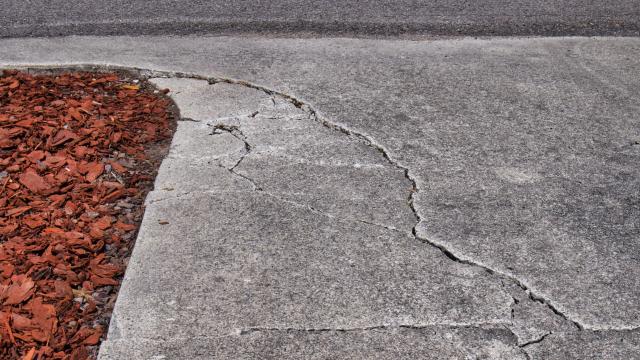Whether your driveway was paved using cement, asphalt, paving stones, bricks, or another material, you may have noticed that it has started to sink and crack in certain areas.
Aesthetics aside, it’s wise to figure out the root cause of these issues so you can do something to address them — even if you’re not in a position to repave your driveway. Here are some of the most common causes of the sinking, and how to fix them — at least temporarily — or stop further damage.
Why your driveway is sinking, and how to fix it
When parts of your driveway start to sink and crack, the surface becomes uneven, and, as a result, a potential safety hazard. Here are a few of the reasons why your driveway may be sinking, and what to do to mitigate the damage when repaving it isn’t an option.
The foundation isn’t solid
Like houses, driveways need a solid foundation to provide support, and help keep everything in place.
“All driveways should have a base of tightly packed crushed stone or gravel, followed by an aggregate base,” Yousaf Ismail, e-commerce manager and paving specialist for Simply Paving tells Lifehacker in an email. “If your driveway was laid with inadequate materials or wasn’t packed tightly enough, then you will experience cracking or sinking as the foundation shifts around.”
Solution: Ismail recommends filling in the sunken areas with a sand and cement mixture — a process called “mudjacking.” While this will raise the sunken section, the repaired patch will be visible, and it’s only a temporary solution, he notes.
Weather-related erosion
If you live somewhere with hot summers, cold winters, and everything in between, erosion may be the culprit. Weather events like heavy rainfall, flash flooding, freezing and thawing cycles, and frequent humidity all contribute to the process.
Here’s what happens, according to Airlift Concrete Experts:
Erosion can wash soil away from under your driveway. This creates a void or space under the driveway slab. In turn, voids under concrete slabs cause the concrete to sink and crack. Your driveway may begin to sink in areas where the soil has been washed out creating unattractive and hazardous conditions.
Solution: Clogged gutters and downspouts can make driveway erosion worse, so check, clean, and/or fix those. Also, make sure that your yard has proper drainage, to prevent a backup of water. Though this won’t fix the parts of the driveway that have already sunk, it’ll help stop it from getting worse.
Heavy vehicles
Over time, parking large, heavy vehicles like RVs or trucks on your driveway can cause it to sink — especially if it doesn’t have a solid foundation.
Solution: Park your heaviest vehicle on the opposite side of the driveway, “to even out the weight and lessen the impact on the cracked and sunken parts,” says Ismail.
You’ve been sealing too often or not often enough
Much like watering a plant, you can damage your driveway by apply sealant too frequently, or not often enough. According to Ismail, when a driveway’s topcoat isn’t sealed, it leaves it vulnerable to damage. But don’t try to overcompensate: Sealing it too often, or adding too many layers can make your driveway more likely to crack, he adds.
Solution: Check the sealant’s instructions to see how many coats is needed for your driveway’s material. When in doubt, Ismail suggests applying sealant once a year.

Leave a Reply
You must be logged in to post a comment.